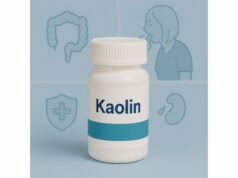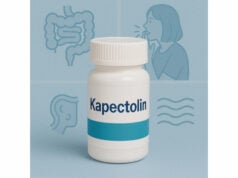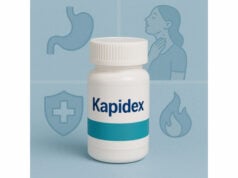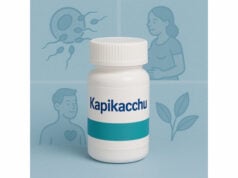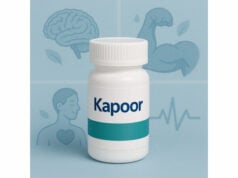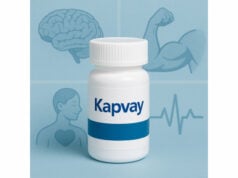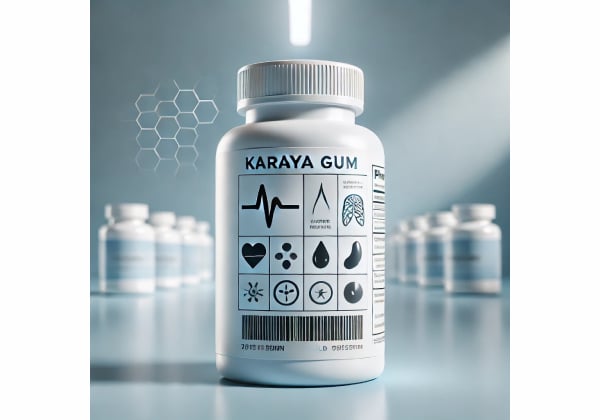
Karaya gum is a natural, plant-derived polysaccharide obtained from the dried exudate of Sterculia species, traditionally tapped from the bark and branches. In food and healthcare, it plays three distinct roles: a bulk-forming fiber that helps normalize bowel movements, a bioadhesive used in denture and ostomy products, and a functional additive that thickens and stabilizes foods under the code E 416. Because karaya is only partially fermentable and holds many times its weight in water, it swells gently and increases stool bulk with less gas than some other fibers. Its film-forming and moisture-absorbing properties also make it valuable for protecting fragile peristomal skin and improving denture retention. At the same time, karaya is not a cure-all: it can bind medications if taken too close together, provoke bloating if dosed too fast, and (rarely) cause allergic reactions. This guide offers a people-first, practical look at what karaya gum can—and should not—do, how to use it correctly, realistic dosage ranges, who should avoid it, and how to troubleshoot common problems.
Key Insights
- Bulk-forming fiber that absorbs water to support regularity and stool form.
- Useful as a bioadhesive in denture powders and peristomal (ostomy) skin products.
- Typical oral fiber range: 2–5 g per dose, 1–3 times daily with ≥250–300 mL water.
- Avoid use (or seek medical advice first) with bowel obstruction risk, severe swallowing disorders, or if you take narrow-therapeutic-index medications.
Table of Contents
- What is karaya gum and how it works
- Benefits: where karaya gum shines
- How to use karaya gum correctly
- Dosage: how much and when
- Safety: who should avoid and interactions
- Evidence summary and common questions
What is karaya gum and how it works
Origin and composition. Karaya gum is the dried, purified exudate from Sterculia species (often Sterculia urens). Chemically, it is a complex, slightly acidic polysaccharide rich in galacturonic acid with acetyl groups that enhance water-holding and swelling. In food systems it functions as a thickener and stabilizer; in health products it serves primarily as a bulk fiber or bioadhesive.
How it behaves in the gut. When mixed with water, karaya forms a viscous gel that increases stool mass and softness. Because it is only partially fermented by colonic bacteria, it tends to generate less gas than rapidly fermentable fibers. Mechanically, the hydrated gel stimulates peristalsis and normalizes transit, much like psyllium, but with a different texture profile. The fiber’s viscosity can also slow the absorption of sugars and lipids modestly, though karaya is not a glucose-lowering or lipid-lowering drug and should not be used as one.
Why it sticks (literally). The same long-chain structure that traps water also forms films on moist surfaces. In dentistry and ostomy care, karaya’s film-forming and moisture-absorbing properties help create a more even surface, protect weepy skin, and improve the seal between appliances and the body. In dressings and hydrocolloids, it acts synergistically with other gums (such as pectin) to manage moisture and protect fragile skin.
Regulatory status and quality signals. In many regions, karaya gum is an approved food additive (E 416) and is affirmed or listed as safe when used within good manufacturing practice. For consumer products, trustworthy labels disclose the gum source and grade, and reputable vendors provide batch testing for identity and purity. Because “natural gum” is a broad category, confirm that a product explicitly lists karaya (not just “gum blend”) if you’re looking for its specific properties.
Bottom line. Think of karaya as a water-loving, gently swelling fiber that also happens to be a skin-protective bioadhesive—useful when you match product type to the job and respect a few safety rules.
Benefits: where karaya gum shines
1) Bowel regularity (bulk-forming support). Karaya’s best-supported everyday role is as a bulk fiber for people who need help with stool consistency—either too hard or too loose. Taken with adequate water, it increases stool volume and softness, making bowel movements easier to pass. Because it is only partially fermented, some users find it more comfortable than highly fermentable fibers that can cause rapid gas and cramping. It is suitable for short-term constipation relief and for maintaining regularity when dietary fiber falls short.
2) Stool form stabilization in loose stools. By absorbing water and increasing viscosity, karaya can help firm loose stools in mild, non-infectious diarrhea. It is not a replacement for medical evaluation in persistent diarrhea, blood in stool, fever, or dehydration—those require clinical care. Used briefly, it can reduce urgency and improve ease of containment.
3) Denture retention and comfort. As a component in denture powders, karaya creates a thin, bioadhesive film when it contacts saliva, improving the stability and comfort of well-fitting dentures. The goals are better chewing confidence, fewer sore spots from micro-movement, and less food ingress under the plate. It complements—not replaces—good denture fit; if your denture is loose, a reline or remake remains the gold standard.
4) Peristomal (ostomy) skin protection. In ostomy care, karaya-containing powders and hydrocolloids help absorb moisture from weepy, irritated skin and promote adhesion of the barrier wafer. Dusting a tiny amount on moist skin, removing the excess, and then applying the pouching system can reduce undermining and leakage, giving the skin time to recover. Many hydrocolloid wafers use blends (e.g., carboxymethylcellulose, pectin, karaya) to balance moisture management and adhesion.
5) Food and pharmacy utility. In foods, karaya stabilizes emulsions and improves texture in dressings, frozen desserts, and confections. In pharmacy, modified karaya is a matrix former or disintegrant in tablets and films, taking advantage of its swelling and bioadhesive behavior to control drug release or enhance mucosal contact. While these are manufacturing uses rather than “supplement” benefits, they explain why you encounter karaya across different product categories.
Where it is not the right tool. Karaya is not a weight-loss aid, detox agent, or treatment for serious gastrointestinal disease. It should not be used as a substitute for evaluation of rectal bleeding, iron-deficiency anemia, unexplained weight loss, severe abdominal pain, fever, or new-onset constipation in older adults. In dentistry, prolonged reliance on adhesives to compensate for a poor fit can worsen pressure spots; see a prosthodontist for adjustments or relining.
How to use karaya gum correctly
Oral fiber routine (everyday use). Start low and go slow. Mix the powder thoroughly in 250–300 mL of cool water (or a soft food) and drink promptly before it thickens excessively. Begin with 2 g once daily for 3–4 days. If well tolerated, increase to 2–3 g twice daily. Some adults do best at 4–5 g per dose once or twice daily, but higher is not always better; the goal is comfortable, formed stools without straining or urgency.
Hydration is non-negotiable. Bulk fibers need water. Inadequate fluids increase the risk of choking, esophageal sticking, or intestinal impaction, especially in people with swallowing difficulties or reduced gut motility. If you cannot reliably drink a full glass with each dose, choose a different strategy.
Timing with meals and medicines. To minimize interference with medication absorption, separate karaya by at least 2 hours from oral drugs and supplements. This spacing is especially important for medications with narrow therapeutic windows (e.g., thyroid hormone, digoxin, certain antiepileptics). For comfort, many people take karaya with meals or right after—find the time that fits your routine while respecting the two-hour buffer.
Denture adhesive basics. Clean and dry the denture and oral tissues. Sprinkle a thin, even layer of karaya-containing powder on the fitting surface (palate and ridge areas), tap off the excess, seat the denture, and hold gently for 10–20 seconds. Too much powder reduces adhesion and can ooze at the edges; less is more. Remove the adhesive daily, clean thoroughly, and give your tissues time off overnight unless your dentist advises otherwise.
Peristomal (ostomy) skin technique. If the peristomal skin is weepy, cleanse gently and pat dry. Lightly dust karaya powder over the moist areas, blow or brush away the excess, and then apply a barrier wipe if part of your routine. Fit and apply the wafer promptly. The powder’s job is to absorb moisture and create a dry, level surface—it should not form a thick layer. If leakage or undermining persists, consult a stoma nurse for appliance fit assessment and potential convexity or ring adjustments.
Storage and shelf life. Keep powders tightly closed, away from humidity and heat. Discard if clumped, discolored, or past the manufacturer’s expiry. For hygiene, avoid touching the bottle tip to skin or saliva; if contamination occurs, replace the product.
Travel and flexibility. Pre-portion doses into small, dry containers to keep your routine steady when away from home. Always carry a water bottle; consider single-serve sachets if available.
Dosage: how much and when
Oral fiber (adults).
- Starting dose: 2 g once daily with ≥250–300 mL water.
- Typical maintenance: 2–5 g per dose, 1–3 times daily as needed for stool normalization.
- Maximum practical daily amount: Many individuals find 10–15 g/day is the ceiling for comfort. Exceeding this can increase bloating or alter medication absorption without added benefit.
Oral fiber (older adults).
- Begin at 1–2 g once daily; increase every 3–4 days only if no bloating or discomfort. Pay extra attention to hydration and medication spacing.
Oral fiber (adolescents).
- Use only with clinician guidance. As a rule of thumb for teens, start at 1 g once daily and increase slowly; confirm medication timing with a pharmacist or clinician.
Not for young children without medical advice. Commercial pediatric fibers with labeled dosing and safety testing are preferred. Do not improvise with bulk karaya powder in toddlers or children.
Short-term loose stool support.
- 2–3 g after a loose movement, up to 3 times daily, with plenty of water, for no more than 48 hours unless advised by a clinician. Stop and seek medical care for high fever, blood in stool, severe dehydration, or if symptoms persist.
Denture adhesive powder.
- Use a very thin dusting—think “light snowfall,” not a snowdrift. Reapply once daily after thorough cleaning. If you need repeated applications throughout the day, the denture likely needs adjustment; schedule a fit assessment.
Peristomal powder.
- Pinch-dusting technique: apply sparingly, remove excess, and proceed with wafer application. Frequency depends on skin condition—often each appliance change during an active weepy phase, then taper off as skin heals.
Special populations.
- Pregnancy and breastfeeding: As a food additive in typical amounts, karaya is generally considered acceptable; for medicinal dosing, confirm with your clinician, especially if you take iron, thyroid hormone, or other essential medications.
- Diabetes: Fiber may modestly flatten post-meal glucose peaks but can also confound timing of oral hypoglycemics; maintain the 2-hour separation and monitor glucose as advised.
- Irritable bowel patterns: Introduce at the lowest dose and titrate cautiously; if symptoms flare, pause and reassess.
When to adjust or stop.
- Reduce the dose if you experience persistent bloating, cramping, or excessive stool bulk. Stop and seek care immediately for choking, chest discomfort after swallowing, no bowel movement accompanied by pain and bloating, or signs of obstruction.
Safety: who should avoid and interactions
Common, usually mild effects. Early use may bring bloating, gas, or a feeling of fullness, especially if you increase too fast or drink too little. These typically settle within a week at a stable dose. With denture or peristomal powders, mild skin dryness may occur—counterbalance with gentle moisturization on off-days as appropriate.
Less common concerns.
- Allergy or sensitivity: Rare cases of hypersensitivity to karaya are reported. Stop immediately if you notice itching, wheeze, hives, or swelling.
- Esophageal or intestinal obstruction: Risk rises with inadequate fluid intake, swallowing disorders, strictures, or underlying motility issues.
- Dental considerations: Overuse of adhesive powders can trap plaque and food debris; daily removal and oral hygiene are essential.
Absolute or strong relative cautions.
- Do not use oral karaya if you have known or suspected bowel obstruction, esophageal stricture, megacolon, or severe gastroparesis, unless a clinician supervising your care recommends it.
- Avoid or seek specialist advice if you have major swallowing difficulties, recent GI surgery, or unexplained rectal bleeding.
- Infants and young children: Avoid self-directed use.
Medication interactions (spacing matters). Karaya can delay or reduce absorption of oral drugs. Keep a 2-hour gap before and after:
- Thyroid hormone (levothyroxine)
- Iron and zinc supplements
- Certain antibiotics (e.g., fluoroquinolones, tetracyclines)
- Antiepileptics, digoxin, and other narrow-therapeutic-index agents
- Diabetes medications taken orally
With denture and ostomy products.
- Denture powders: If you experience sore spots, burning, or altered taste, remove the denture, rinse thoroughly, and rest tissues. Persistent symptoms warrant dental evaluation.
- Peristomal powders: If leakage persists despite proper technique, consult a stoma nurse to reassess wafer fit, size, and need for convexity or barrier rings—powder alone cannot overcome an ill-fitting appliance.
Environmental and ethical notes. Sourcing karaya gum depends on responsible tapping of Sterculia trees. Favor suppliers that state sustainable harvesting and quality controls; this supports both product safety and ecological stewardship.
Evidence summary and common questions
What the science supports today. Regulatory and safety evaluations classify karaya as a permitted food additive when used within good manufacturing practice. Human tolerance data and broad industrial use support its role as a functional fiber and bioadhesive. In dentistry and ostomy care, controlled in vitro and clinical experience show that gum-based adhesives—karaya among them—can improve appliance retention and protect macerated skin when used correctly. Contemporary materials research continues to refine karaya-based films and hydrogels for medical applications, leveraging bioadhesion and moisture management.
How karaya compares with other fibers. Relative to highly fermentable fibers (e.g., inulin), karaya tends to produce less gas but also exerts gentler effects on lipids and glycemia. Compared with psyllium, many users find texture and mouthfeel different (karaya gels more quickly and can be tackier), which is why prompt mixing and drinking help. The choice often comes down to tolerance and goals: if your priority is stool form with minimal gas, karaya is a practical option; for LDL-cholesterol effects, psyllium has more robust data.
Can karaya be “prebiotic”? Karaya is partially fermentable, so some gut microbes can utilize it, but it is not classically categorized as a potent prebiotic like galacto-oligosaccharides. Expect modest fermentation and modest gas—one reason many people tolerate it.
Is there a best time of day to take it? Consistency beats timing. Many take karaya with breakfast and (if needed) with dinner, leaving mid-day free for medications. If nighttime reflux is an issue, avoid large fiber doses right before bed.
Will it help hemorrhoids or fissures? By softening stools and reducing straining, karaya can reduce mechanical aggravation of hemorrhoids or fissures. Pair with hydration, sitz baths, and clinician-directed treatments as needed.
What if I have a sensitive mouth or fragile oral tissues? If adhesive powders irritate your mucosa, switch brands, use less, or consider cream formulations. Persistent irritation suggests a denture fit or hygiene issue—schedule an evaluation.
Bottom line. Karaya gum is a versatile, water-binding fiber and bioadhesive. Use it to normalize stool, support denture fit, and protect peristomal skin, but pair it with hydration, medication spacing, and professional input when red flags appear. Respect those basics, and karaya can be a low-drama, high-utility addition to everyday care.
References
- Re‐evaluation of karaya gum (E 416) as a food additive (2016) (Systematic Review/Assessment)
- karaya, gum (sterculia urens roxb.) (2024) (Regulatory Database)
- Cytotoxic Potential of Denture Adhesives on Human Gingival Fibroblasts—In Vitro Study (2022)
- Karaya/Gellan-Gum-Based Bilayer Films Containing 3,3′-Diindolylmethane Loaded Liposomes for Potential Cervicovaginal Delivery (2023)
- Physicochemical Properties and Composition of Peristomal Medical Products—A Literature Review (2025) (Review)
Medical Disclaimer
This article is for general education and does not replace personalized medical advice, diagnosis, or treatment. Always consult a qualified clinician before starting a new fiber supplement, changing denture adhesive products, or modifying ostomy care. Seek urgent care for choking, severe abdominal pain with constipation, blood in stool, fever with diarrhea, or signs of allergic reaction (hives, swelling, wheeze). If you use prescription medicines, separate karaya gum by at least two hours to avoid absorption issues.
If this guide was helpful, please consider sharing it on Facebook, X (formerly Twitter), or your preferred platform, and follow us for more people-first health explainers. Your support helps us continue creating high-quality, trustworthy content.

